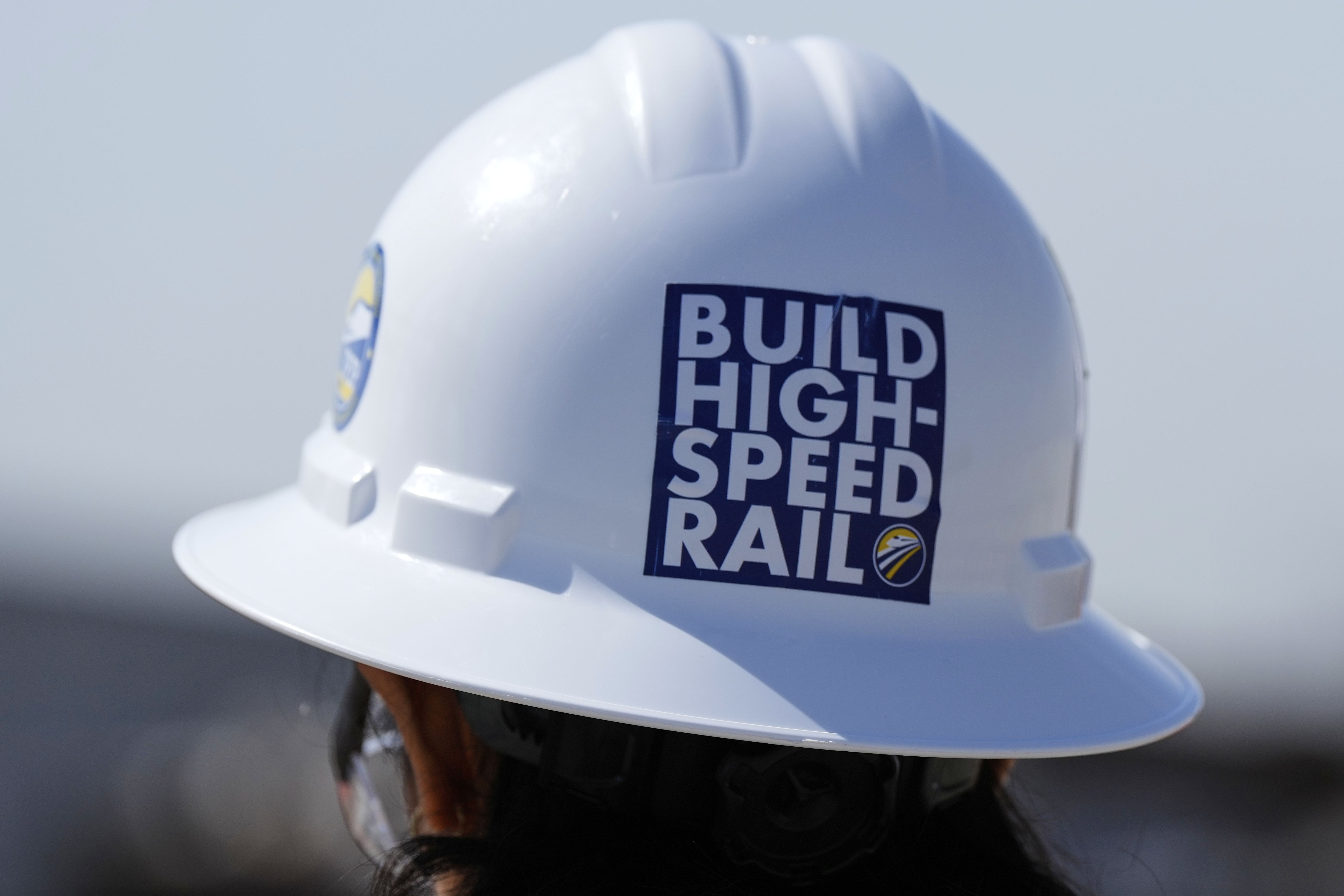The Trump administration threatened to claw back $4 billion in federal funds for California’s long-delayed high speed rail system Wednesday, saying there’s “no viable path” to completing the project.
The state hasn’t laid any track since the rail line was first proposed in 2008, and President Donald Trump and Transportation Secretary Sean Duffy have been increasingly critical of the state’s performance.
In February, Duffy directed the Federal Railroad Administration to investigate the California High-Speed Rail Authority’s use of the federal funds. The FRA’s 310-page report was released Wednesday, along with a letter from acting FRA Administrator Drew Feeley to state High-Speed Rail Authority CEO Ian Choudri outlining the results.
California has a week to acknowledge the report and 30 days after that to respond if it wants to dispute the findings.
“This report exposes a cold, hard truth: CHSRA has no viable path to complete this project on time or on budget,” Duffy said in a statement. “CHSRA is on notice — If they can’t deliver on their end of the deal, it could soon be time for these funds to flow to other projects that can achieve President Trump’s vision of building great, big, beautiful things again.”
Choudri said earlier this yearhe’s trying to reform the authority’s systems and attract private funding.
Most of the rail line is funded by the state, and Gov. Gavin Newsom’s (D) budget proposal sets aside $1 billion a year for the next 20 years to pay for construction, Choudri said in a statement Wednesday.
“The Authority strongly disagrees with the FRA’s conclusions, which are misguided and do not reflect the substantial progress made to deliver high-speed rail in California,” Choudri said in the statement. “We remain firmly committed to completing the nation’s first true high-speed rail system connecting the major population centers in the state.”
The high-speed rail system was originally proposed in 2008, and was supposed to connect Los Angeles and San Francisco, which are roughly 400 miles apart, with extensions connecting to Sacramento and San Diego.
About a fourth of the project’s funding so far has come from the federal government. The rest has come from state bonds and from other sources including California’s cap-and-trade system for carbon dioxide emissions.
The Federal Railroad Administration has provided three grants to the project — $2.55 billion in 2009, $929 million in 2010 and $3 billion in 2024, funded by bipartisan infrastructure law.
The government estimates its total investment is $6.9 billion, including related funds for projects like railroad crossings.
The 2010 and 2024 grants were intended for construction, which makes them eligible for clawbacks, according to the report. California officials have previously argued that they’ve started construction on overpasses and other parts of the system, although they haven’t laid any tracks.
The overall cost is now estimated at more than $100 billion, and it has blown past its original goal of opening in 2020.

In 2019, Newsom narrowed the project’s scope to a segment between Bakersfield, and Merced, which are much smaller cities in California’s largely rural Central Valley. The system’s mileage has since been lowered to 119 miles.
The federal report said California hasn’t procured train sets for the system and still has a $7 billion funding gap to finish the shorter segment, making it unlikely that even the shorter segment will be in service by 2033, which was part of its agreement for the federal grants.
The state is still negotiating right-of-way agreements with some property owners, including local water districts. And the state’s contractors have also submitted changed orders — essentially price increases — totaling $1.6 billion since January 2023, the report said.
“Despite the substantial scope reduction, the CHSR Project still continues to face numerous delays and cost overruns,” the report said, using an acronym for California High-Speed Rail. “At this rate, CHSRA will never complete the CHSR System.”
Choudri, who took over the rail authority in 2024, has acknowledged the project’s problems and has been searching for solutions.
He proposed “right-sizing” the project and focusing on finishing the initial section of tracks, along with cutting red tape and reforming how the rail authority oversees construction.
Ultimately, Choudri said he wants to connect the system to California’s major cities, which’ll help boost its ridership and attract private investment.
“We started this one, and we are not succeeding,” Choudri told the Associated Press in an April 30 story. “That was the main reason for me to say, ‘Let’s go in, completely turn it around and put it back to where it should have been. Fix all the issues, get the funding stabilized and demonstrate to the rest of the world that when we decide that we want to do it, we actually will do it.’”

